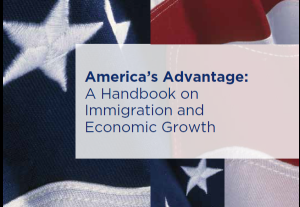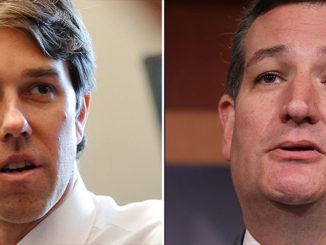
by Alex Gonzalez
As if it wasn’t enough that we have to hear Liberals blaming every single problem on President Bush, there is also an anti-Republican Establishment that also blames our financial woes on President Bush. Basically, they argue, that the Republican Establishment and President Bush are partly responsible for all the spending and enlargement of the federal government. However, in reality, the reason why President W. Bush signed all those legislations into law is because all of those bills proposed were Party positions that the GOP Establishment endorsed at that time. But, those anti-Establishment groups are now scolding W. Bush who pushed for those legislations and then in turn were signed by the President. They do not credit the fact that President Bush was a strong social conservative Republican President who tried hard on helping those groups that were part of his 2004 conservative coalition. President Bush, as leader of the Establishment, signed all those bills from Congress to hold a national Party platform and Party cohesion. This fact is slightly brushed to the side and instead, some of the anti-Establishment groups blame President Bush and the Republican Establishment for our financial woes.
First of all, anyone suggesting that the conservative Republican Party can function without a strong national Establishment should not be leading the Party, because, often the interests of localized groups do not reflect the views of National GOP platform. And this is clearly stated in federalist papers where the is an inherent tendency by “local minority” movement to object to national platform: “minority of the whole… who are united and actuated by some common impulse of passion, or of interests, are adverse aggregate interests of the community” (the nation). As David Brooks argues:
Many conservatives have looked at these inexorable steps toward centralization with growing alarm. Complicated problems, many have argued, are best addressed by local people on the ground. Centralized government inevitably leads to oligarchic government. The virtue of the citizenry depends on local control, personal initiative and intimate connections. These things are being bleached away…. Those of us in the Hamiltonian tradition sit crossways in this debate. Alexander Hamilton was not shy about concentrating power in Washington if he thought centralized authority was necessary to achieve national goals. On the other hand, he did not believe central decision-makers had the ability to direct an infinitely complex and changing world. He centralized goal-setting while decentralizing decision-making.
And this national centralization de-centralization at the local state level is clearly formulated around the Constitution and the Tenth Amendment of States’ Rights. The Republican Establishment needs a national centralized mantra on overlapping issues to bring together the “East Coast Welfare-State Republicans”, the Bible Belt Republicans, and the West coast Constitutional Republicans. But the Establishment also needs a de-centralization for State Parties to promote independent “local cultures” (issues) as Hamilton argued. But the local movement should never control the national Establishments because they, naturally, might trump over the issues of other Republican groups “who are united and actuated by some common impulse of passion, or of interests, are adverse aggregate interests of the community”.
 Therefore, the GOP needs a national structure—Establishment–to coordinate with voters and with conservative legislators. This will in turn harmonize policies and prevent intra-Party feuds in many states that often lead toe regional realignments. In hindsight, as President Bush, who was the leader of the Establishment, from 2001 to 2006, signed all those bills from Congress to hold a National Party platform and Party cohesion.
Therefore, the GOP needs a national structure—Establishment–to coordinate with voters and with conservative legislators. This will in turn harmonize policies and prevent intra-Party feuds in many states that often lead toe regional realignments. In hindsight, as President Bush, who was the leader of the Establishment, from 2001 to 2006, signed all those bills from Congress to hold a National Party platform and Party cohesion.
Second, the Republican Party needs an Establishment national organization to operate and formulate a cohesive conservative national platform or policies. As a leader of the Establishment, President Bush formulated his polices around the needs of all those groups that came to his aid during his 2000-04 campaigns. And yes, he signed all the bills that came from the Republican-controlled Congress. In fact, Bush never vetoed a Republican bill because he knew, as the head of Republican Establishment, he had to sign bills to show Party Unity under strenuous circumstances such as 9/11 and the War on Terror. Hence, as a good Republican “General” and as head of the Establishment Bush signed those bills to keep his coalition together, even if he thought some of those bill were not necessary (see bills below). Again, all those bills that were sponsored and supported by the same grassroots groups and activists that now scold President Bush and the Establishment.
Third, the anti-Establishment voices scolding Bush and the Establishment might not be doing this to preserve their power, which is relational thing to do since groups tied to mobilize around their own interests. Furthermore, any political scientist who follows the political movement can tell you that because all political activists groups follow the same Group Theory of Collective Action model. This theory was formulated by the conservative Harvard political economist, Mankur Olson, where he argues that in the U.S. “pressure groups”—activist groups —have been dominated by a “Group Theory” argument in which groups, just like individuals, will act when necessary to further their common or group goals. In this theory, according to Olson, groups act to serve their own interests because the individuals in the group act out of self-interest. So if individuals in the groups altruistically disregarded their own personal welfare, it would not be very likely that they collectively seek some selfish common or group objective. “Such altruism is exceptional and self-interested behavior is usually to be the rule, at least when economic issues are at stake.” So it is rational and logical for groups, and individuals within that group, to act out of self-interest. Furthermore:
In this theory of, which is [widely the accepted theory on how political groups organize], “Logic of Collective” action, The groups tend to act in support of their group interests, is supposed to followed the norm the widely accepted premise of rational self-interested behavior. In other words, if the members of some group have common interests or objectives, and if they all be better off if that objective were achieved, it has been logically to presume the this group would act on their own rational self-interests to achieve their objective.
Additionally, the other theory is that these “pressure groups” are more effective when they perceive that the Establishment and the elites are fractured. In other words, because there is no strong leadership to protect the Establishment, they would move in and claim that they are the new leadership—since nobody else is doing it–and claim to be the new Leaders of the Party. Essentially, the fact that the Republican Establishment has created a vacuum of power among its top leaders has allowed this anti-Establishments activists to claim the leadership of the Party; And they to shift blame to the Establishment and President Bush for all of the failed economy policies and the growth of government when in reality it was them who pushed for these failed policies. But they do this to further weaken the leadership of the Establishments. But in reality, Bush and the Establishment only promoted and signed policies that we all, as Republicans and conservatives, wanted. So blaming Bush and the Establishment for something we all wanted is not right.
they perceive that the Establishment and the elites are fractured. In other words, because there is no strong leadership to protect the Establishment, they would move in and claim that they are the new leadership—since nobody else is doing it–and claim to be the new Leaders of the Party. Essentially, the fact that the Republican Establishment has created a vacuum of power among its top leaders has allowed this anti-Establishments activists to claim the leadership of the Party; And they to shift blame to the Establishment and President Bush for all of the failed economy policies and the growth of government when in reality it was them who pushed for these failed policies. But they do this to further weaken the leadership of the Establishments. But in reality, Bush and the Establishment only promoted and signed policies that we all, as Republicans and conservatives, wanted. So blaming Bush and the Establishment for something we all wanted is not right.
So whether is their economic “rational” self-interest or drive for power, these so-called anti-Establishment groups need to acknowledge every single bills that Bush signed, was passed by Congress, and it was in response to the demands of the conservative base and coalitions. Moreover, the anti-Establishment movement has abandoned the ideas that conservatism does not need to be intellectual while evoking Ronald Reagan. But both Reagan and Bush of surrounded themselves with intellectuals and Establishment Republicans– Historian and Professor and Religious leaders —to create governing conservative collation, which are essential for any Party cohesion and to survive.
So, unlike what the anti-Establishments groups claim, President Bush–just like Reagan–was an Establishment Republican and social conservative who worked hard, through collations, to get the policies promoted by his conservative grassroots base and Establishment in Congress. Moreover, Bush was free trade visionary who wanted to create more free trade in North America. Also, President Bush surrounded himself with Establishment conservative intellectual to create party cohesion. He understood that part of the success of the Bush 2004 re-election campaign was the ability to build collation with the social conservative Christian Coalition, Latino voter, military leaders, and conservative intellectual. Leadership is about bringing people together. Bush was a great leader because he built coalitions of military leaders, intellectuals, religious leaders and GOPers within the Establishment. And that made him a great Republican Leader and a loyal Establishment Republican. And, yes I am Hamiltonian Republican, too.
These are the major legislation that Bush signed with an overwhelming supported by all of us, including the anti- Establishment grassroots groups.
Medicare Part D: Medicare Part D was one the largest unfunded program the Bush singed into laws with support of the Republican and Democrats, and senior lobbing groups like AARP.
REAL ID: The regulations laid out in the law — a recommendation of the Sept. 11 commission that investigated the 2001 terror attacks — creates a national security standard for state-issued identification cards and driver’s licenses to be used for federal purposes, like boarding a plane or entering federal buildings such as a courthouse. The law aimed to prevent terrorists from obtaining valid driver’s licenses and ID cards. But Real ID was an unfunded federal mandate that caused major privacy rights concern among conservative states. The program is estimated to cost $11 billion over five years and has been postponed many times. Also, this program was expanded the power of the federal government by forcing states to collect finger prints of all residents and send all the data to a federal centralized base.
Patriot Act: The Patriot Act significantly expanded the power of federal law enforcement by allowing the FBI and CIA to share evidence and by giving terrorism investigators access to evidence-gathering tools that agents in criminal probes have used for years. When Patriot Act was passed, every single Republican voted for it.
No Child left Behind: President George W. Bush declared the start of a “new era” in American public education with the signing of the No Child Left behind Act. However, Education reform was a major issue in Texas, and Bush realized its potential for a Republican presidential hopeful. As governor, he had promoted the state’s program of annually testing all students in grades 3-8 and rating schools based on their performance on the Texas Assessment of Academic Skills (TAAS) exams. On the campaign trail he touted steadily improving TAAS scores, especially among black and Latino students. So the result was a three-way coalition among conservative Republicans and Democrats.
The Freedom Agenda and Wars in Afghanistan and Iraq: The foreign policy of the anti-Establishment group mirrors none of Republican Party Establishment, and more like the of Pat Buchanan’s isolationism, that accused George W. Bush of expensive wars in Iraq and Afghanistan . But in 2002 all Republicans rallied behind Bush to send troop to Afghanistan, and the subsequently the Invasion of Iraq I n2003; even if the Wars were not funded.
Troubled Asset Relief Program – TARP: A government program created for the establishment and management of a Treasury fund, in an attempt to curb the ongoing financial crisis of 2007-2008. The TARP gives the U.S. Treasury purchasing power of $700 billion to buy up mortgage backed securities (MBS) from institutions across the country, in an attempt to create liquidity and un-seize the money markets.
Free trade and Immigration
Immigration Bill v. “Sensenbrenner Bill”. On December, 2005, the House passed the Sensenbrenner Bill” criminalizing all violations of federal immigration law, including illegal presence, which indirectly shifts the responsibility of immigration enforcement to state and local law authorities. Conversely, the U.S. Senate under the leadership of Republican Bill Frist approved a wide-ranging overhaul of immigration laws to bolster security at the Mexican border and to grant many illegal immigrants a path toward legalization. President Bush commended the Senate on its work in “passing bipartisan comprehensive immigration reform.”
Security and Prosperity Partnership of North America (SPP): President Bush initiated the SSP on March, 2005, with all conservative leaders of Canada and Mexico to discuss multi-lateral issues including trade and economic collaboration. The initial plan included working group to promote closer trade and economic relations between the three nations and a regional uniform coordination for security and prosperity for North American. President Bush believed in closer relations with Canada and Mexico to promote more free trade.




